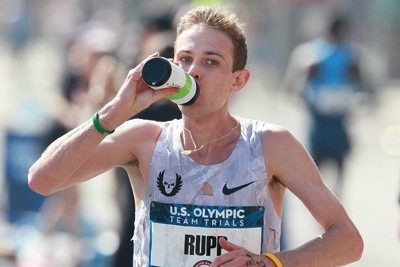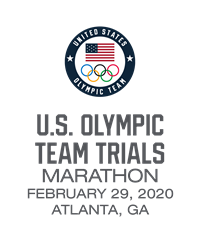History of Prize Money at the Olympic Marathon Trials
by LetsRun.com
April 30, 2018
Last week it was announced that the 2020 U.S. Olympic Marathon Trials will be hosted by the Atlanta Track Club and be held in Atlanta, Georgia, on February 29, 2020.
There were two unique additions to this year’s Trials announcement. First, “B” qualifiers (2:19 marathon/1:04 half marathon for men, 2:45/1:13 for women) for the Trials will get their travel and accommodations paid for by the host committee. In most of the recent marathon Trials, “A” qualifiers (2:15 for men/2:37 for women in 2016) had their travel paid, but “B” qualifiers had to pay their own way. The second addition was the announcement that 40% of the money generated by the Trials will “go back to the Athletes Advisory Committee of USA Track & Field to be distributed among the competitors,” according to the ATC. That is in addition to $480,000 in prize money and $10,000 in bonuses given to each of the Olympians by USATF.
Paying the travel for “B” qualifiers in 2020 is a significant additional expense compared to 2016. There were at least 138 “B” men’s qualifiers who ran at the 2016 Olympic Trials and 156 “B” women’s qualifiers who ran. At an estimated $750 in travel for each “B” qualifier, that would have been an extra $220,500 in expenses.
The more inclusive approach of 2020’s Trials inspired us to go back and look at what the past Olympic Marathon Trials did in terms of paying prize money.
| Overall |
/10
|
| Comfort |
/10
|
| Cushioning |
/10
|
| Durability |
/10
|
| Appearance |
/10
|
| Value |
/10
|
Prize money in 2020 is down $60,000 per sex from 2016, but once you factor in the likely over $200,000 in added expense of paying the “B” athletes’ travel, more money will go to athletes in 2020 than 2016, even excluding the revenue sharing.
Looking back at the Trials over the years, 2004 had the most prize money in absolute dollars for both men and women. However, the men and women distributed their money very differently. Alan Culpepper won $89,000 for winning the Trials, while Colleen De Reuck only took home $49,000 for winning the women’s race, as the women paid more people and distributed the money more evenly.
The last two Trials, 2012 and 2016, were the only two where the men and women distributed their money the same way.
In previous years, usually the women opted for a more inclusive approach than the men. The most athletes ever paid at a Trials was the 1988 Olympic Trials where 25 women received prize money.
Twice the women have received slightly more prize money than the men (1988 and 2000) and twice the men have received more money than the women (1992 and 2004). 1992 was the only year one of the sexes got way less than the other with the women receiving only $78,000 in prize money and the men receiving nearly three times that — $218,000.
In inflation-adjusted dollars, the $250,000 in prize money from 1996 (worth $397k today according to usinflationcalculator.com) was the best year for both the men and women at the Trials, but even that year there were big differences between the sexes as Bob Kempainen took home $100,000 for winning while Jenny Spangler took home less than half that for winning the women’s race ($45,000). But at least Kempainen had to throw up to get the extra $55,000, in one of the most memorable runs at the Trials (see the video below).
 Galen Rupp at 2016 Marathon Trials
Galen Rupp at 2016 Marathon Trials

